How to Get and Read Your Indiana Car Accident Report
Securing a copy of your police report after an Indiana car accident is one of the most important things you can do. But how do you get one? And more importantly, once you have your police report, how do you understand it? Let’s go through how to get your Indiana car accident report and how […]
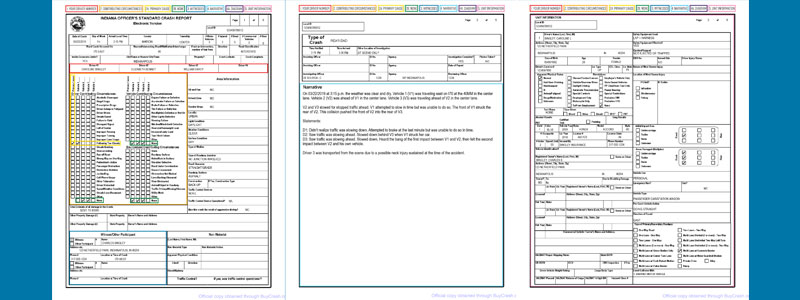
May 12, 2015

Securing a copy of your police report after an Indiana car accident is one of the most important things you can do. But how do you get one? And more importantly, once you have your police report, how do you understand it?
Let’s go through how to get your Indiana car accident report and how to understand it. Keep scrolling for more information, or click or tap the button below to download a free sample copy of an Indiana police report.
DISCLAIMER: Our sample police report is fictional and based on characters freely available in the public domain. Any resemblance to actual persons or events, living or dead, is purely coincidental.
Getting Your Indiana Car Accident Report
To get your Indiana car accident report, you must:
- Call the police to the car accident scene.
- Purchase the police report online or at the station.
1. Call the Police to the Car Accident Scene
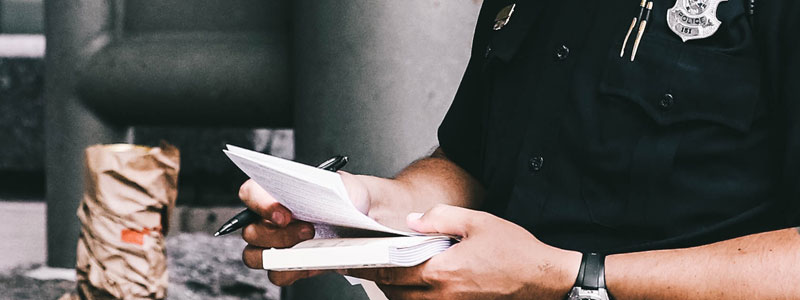
You can’t get a copy of your police report unless it exists in the first place. That means you have to call the police. Police typically cannot file a report unless you call them to the scene of the car accident.
Indiana law states that you must call the police if anyone is injured in a car accident or if there is more than $1,000 in damages. Even if your injuries or damages seem minor, your best bet is to call the police to the scene to file a report.
If you’re involved in a hit-and-run car accident, then you’ll still want to call the police to the scene. A police officer can take your statement and document the evidence.
The important thing to remember is that if you don’t call the police, then you likely will not be able to ask them to file a report later. Even if you go to the station with witness statements and your own recollection, the police typically won’t file a report based only on your facts. They usually file a police report based on what they find at the scene, and they cannot do that unless you call them to the scene of the car accident.
2. Purchase the Police Report Online or at the Station
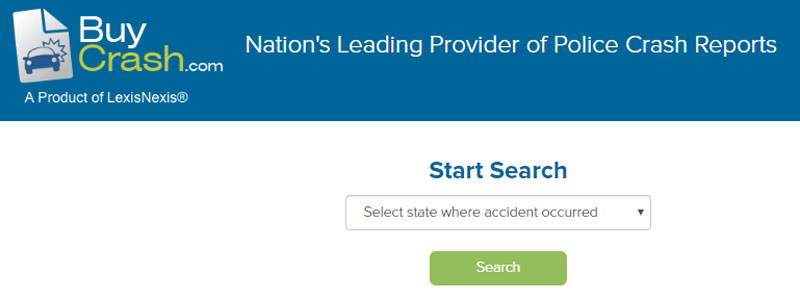
Now that the police have filed a report, you’ll want a copy. You can purchase your police report in one of two ways:
- Online at www.buycrash.com
- In person at the police station
If you want to purchase your police report in person, then make sure to ask the police officer who arrives at the scene of the car accident how you may do so. Where and how to purchase a police report in person differs between cities and between police departments.
If you decide to purchase your accident report online, you’ll have to go to www.buycrash.com. Not every state offers accident reports through the website, but Indiana does. Simply enter the state in which your accident occurred.
Next, you’ll have two options for how to search the database for your report. You can either:
- Enter your report number
- Enter your last name and either the date of the accident or the name of the law enforcement agency that produced the report
Regardless of how you choose to purchase your accident report, it should cost the same: $12 (as of April 2019).
Understanding Your Indiana Car Accident Report
Now that you have your Indiana car accident report, you need to understand what’s most important. Click or tap below to see the sample police report in full, or keep scrolling for screenshots of the report as we discuss various sections of it.
1. Your Driver Number

First, determine what driver number has been assigned to you. On the first page of the report, you’ll find driver numbers assigned in the fourth row of boxes, underneath the city in which the crash took place.
Typically, the at-fault driver is listed as Driver #1, but that is not always the case. Remember, the police report isn’t the final authority when it comes to fault. The police officer may assign fault in the report, but an Indiana car accident attorney can use other forms of evidence to determine who’s responsible for the car accident. Never assume that the insurance company will give you a fair deal just because the accident report says you weren’t at fault for the accident.
2. Contributing Circumstances
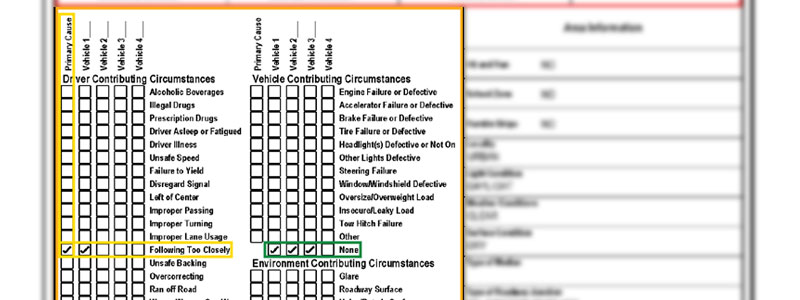
Next, you’ll want to see what caused the accident. Beneath the assigned driver numbers, on the left side of the page, the police report lists various circumstances that contributed to the car accident. There are three categories:
- Driver Contributing Circumstances (e.g., following too closely)
- Vehicle Contributing Circumstances (e.g., brake failure)
- Environment Contributing Circumstances (e.g., glare)
By categorizing and documenting contributing circumstances, the police officer can show how many different situations caused the car accident.
In each category, the police officer can relate each event to a specific vehicle. Keep in mind that your vehicle number is the same as your driver number. For example, if you, Driver #2, experienced glare, then the police officer can mark “glare” for Vehicle #2.
Primary Cause
Each category also has a place for “primary cause.” Police officers can check this box next to any circumstance they believe contributed primarily to the car accident. They must also check a vehicle next to that circumstance.
For example, if the police officer has checked “primary cause” next to “cell phone usage,” then they must also check the box of the vehicle in which the driver used their cell phone.
None
In each category, at the bottom of the list of circumstances, there is “none.” Every vehicle receives at least one checkmark in each of the three types of circumstances. Your best case scenario is for the police officer to mark your vehicle as “none” every time. This means that your vehicle did not contribute at all to any of the circumstances surrounding the car accident.
3. Witnesses

After checking the contributing circumstances, you’ll want to check for witnesses. Eyewitnesses can be crucial for many different kinds of car accidents. However, you may not be able to get witnesses’ contact information and statements. For example, if you’ve been too badly injured in the car accident, then you’re not going to be able to walk around and ask strangers questions.
However, the police officer who arrives at the scene may speak to witnesses, even if you didn’t. Check the witness boxes at the bottom of the first page for witnesses’ contact information. If you have a witness who didn’t get included on the police report, then that witness can call the police station after the fact, and the police officer will take their statement.
4. Narrative
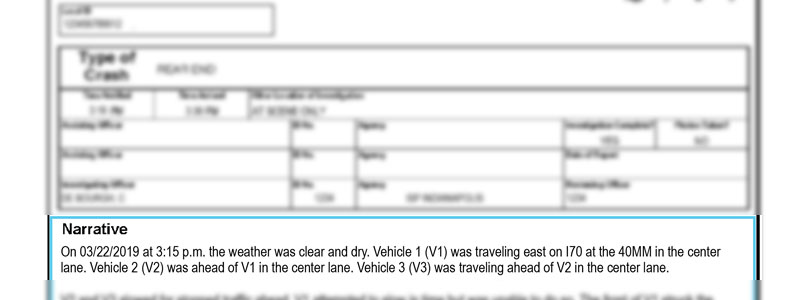
Now that you’ve determined who was in the crash, who caused it, and who witnessed it, you should read the narrative on the second page of the accident report. The narrative is the police officer’s summary of what happened.
Read the narrative carefully to make sure it is consistent with what actually happened. The narrative may include drivers’ statements. It may also include information about anyone transported from the scene to receive medical attention.
Diagram
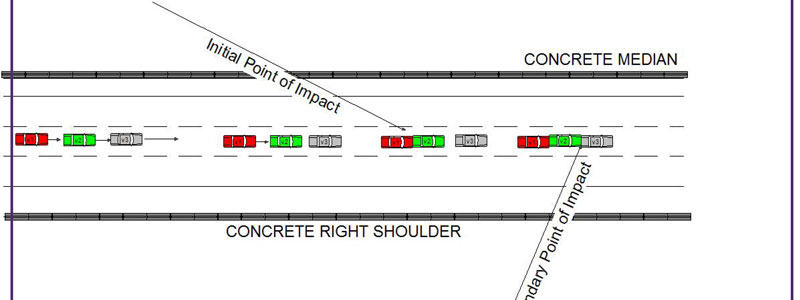
Diagrams often accompany narratives to help illustrate what happened. You’ll always find the diagram on the last page of the report. Take a look at the diagram first to see if it answers any questions you may have about the narrative itself.
What If the Narrative Is Wrong?
At the top of the second page, you’ll find four boxes in the fourth row underneath the “Type of Crash” box:
- Investigating Officer
- ID No.
- Agency
- Reviewing Officer
The investigating officer is the person you’ll need to speak to, and the agency listed is where you’ll find them. Call and ask to speak to the officer who wrote your report if there are errors in it.
Keep in mind that the police department’s definition of “error” may be different from yours. Police departments are more likely to change errors in fact on a report rather than differences of opinion. For example, if the name of the road on which the accident took place is incorrect, the police will likely correct that mistake. However, if the narrative says you were following too closely before you rear-ended someone, the police likely won’t change that, even if you believe it isn’t true.
5. Unit Information
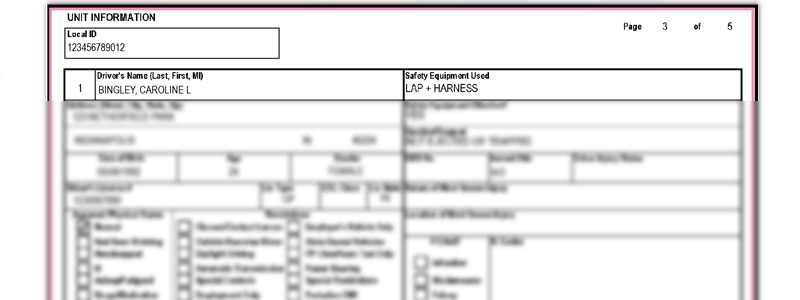
Finally, on the third page of the police report, you’ll find the first “Unit Information” page. There are as many “Unit Information” pages as there are drivers involved in the car accident. These pages should be in the same order as the driver numbers. For example, if you were Driver #2, then your “Unit Information” page will likely come after Driver #1’s.
These pages include contact and insurance information for each driver. They also show whether or not each driver was wearing their seat belt, suffered an immediate injury, or received any traffic citations. “Unit Information” pages also describe the type of damage each vehicle suffered and the type of roadway on which the accident occurred.
Help with Your Indiana Car Accident Report
Police reports are full of information, but figuring out what’s important can be difficult. An Indiana car accident attorney can help you understand your report and can go over your options for recovery.
At Hensley Legal Group, we know what to look for in a police report and can see if we may be able to help with your case. Call us anytime at 317-472-3333, or contact us online for a free conversation about your claim.
Available 24/7
Free Case Review
You won’t pay any fees until we win your case.
It’s easy - you can: